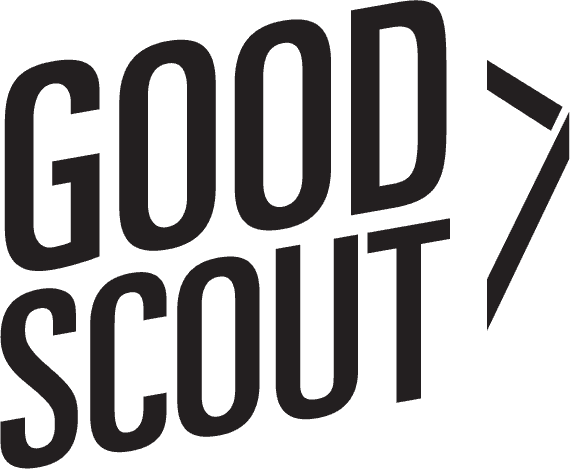Corporate partnerships can be a crucial tool in the pocket of nonprofit organizations for many reasons. Both parties offer unique assets, creating a mutually beneficial alliance that resonates with the mission of both entities. But establishing a solid corporate partnership pipeline comes with complexities for nonprofit organizations seeking new corporate partners or revisiting their partnership strategy.
Good Scout Group Strategist Blair Nordby shares strategic steps for building a corporate partnership pipeline to maximize impact and ensure added value to your organization’s strategic goals. With more than a decade of experience working with nonprofits, she has helped a plethora of organizations establish supportive, productive partnerships in the corporate space.
Start with Internal Clarity on What Partnerships to Pursue
Firstly, it’s crucial to prioritize potential partners. Nordby says there are numerous strategic ways to structure your pipeline around criteria that matter most to your unique organization.
The criteria should be directly tied to your organizational identity and what you need and expect from partners; while financial backing is essential, consider other valuable contributions, such as expertise, resources, or access to emerging markets that could benefit your cause.
Examples of criteria include partners in industries that will help diversify your partnership portfolio, partners with clear commitments to DEI, partners with a strong national or international brand—the list goes on and should be customized to your nonprofit’s needs.
Good Scout builds custom scorecards with criteria for corporate teams to help them stay aligned to big-picture fundraising strategies. These are also incredibly helpful tools for when stakeholders in your organization come knocking with potential opportunities.
A defined set of criteria helps you quickly evaluate and assign a score to any prospect sent your way. The result is a score you can share with your internal team members to allow you to make informed decisions.
As you build your corporate partnership pipeline, Nordby recommends starting with those with a natural affinity with your organization. “Start with identifying companies that naturally have a common thread with your organization, like geography, or perhaps there is a natural industry alignment,” she said. For example, two organizations that are both headquartered in New York City may have an interest in supporting their local community.
Doing the Work to Establish Dynamic New Partnerships
Finding the right partnership can be a bit of a Goldilocks hunt as you work through the possibilities with various corporations trying to find the right fit for your organization. But finding partnerships that resonate with your impact strategy and mission statement can amplify your brand in a whole new way. When you find the right fit, it should build excitement (not fatigue) among your team and empower you with new assets.
One of the critical features of an effective partnership between a corporation and a nonprofit is the mutual value they bring to each other. At the most basic level, this means that both parties should share some philanthropic priorities or core values that move them in the same direction. “What philanthropic focus areas and goals have you identified in a company that align with your organization’s mission and work?” Nordby explained. Asking questions like these is a strong starting point for determining what types of corporations your organization should partner with.
But the idea of mutual benefit extends beyond the mission statement. It’s also important to consider what unique advantages you provide each other and how you each add value to the relationship. “In addition to mission alignment, how else might you engage the company so that they can become more deeply connected to your work? How can you extend engagement to various departments or areas of the business to develop a multi-layered partnership that garners support from the company as a whole?” Nordby asked.
She explained that a big priority for many companies is finding tangible ways to engage employees in their philanthropic priorities. One example of creating more buy-in is inviting the corporate partner’s employees to participate in a volunteer opportunity or provide an opportunity to educate the partner’s employees on the critical issues your organization is working to solve.
“It should be a mutually beneficial relationship for both parties,” Nordby explained.
Staying Focused while Diversifying Your Partnerships Pipeline
It can be tempting for organizations to take every potential partnership opportunity that comes their way. But this can be damaging to the organization.
“Your team’s available time and energy to invest in a partnership is limited,” Nordby said, “so if there is not alignment and shared goals or an understanding of a mutually beneficial partnership, you can end up spreading your team too thin with a partnership that will likely result in a low return on investment.”
With that in mind, you also want to avoid sticking to one corporate niche. Donor diversification allows you to enhance the work that you’re doing overall by taking advantage of the opportunities in various corporate partnerships. “A diverse corporate donor base will bring a range of value and expertise to your organization,” Nordby explained. In addition to financial support, one company may be able to offer pro bono expertise, while others can provide volunteer hours or amplify your brand and provide marketing reach. Using your well-fitted partnerships to your advantage can help fill in any gaps you may have and address specific areas where needs are greater.
Establishing a robust corporate partnership pipeline is vital to increasing brand awareness. Building relationships can open the door to new opportunities to further your cause and allow you to move your mission forward on a grander scale.
Once you’ve established partnerships that are a strong fit, make it a point to reevaluate them annually. It’s easy to fall into the habit of letting one party dictate the terms of the relationship, and revisiting those mutual expectations is essential to ensuring continued productivity and success.
Want to develop smarter ways of working, utilizing your existing resources to sell and steward partnerships—without any additional time, energy, or staff? Learn about Good Scout’s tools for maximizing your partnership portfolio.
